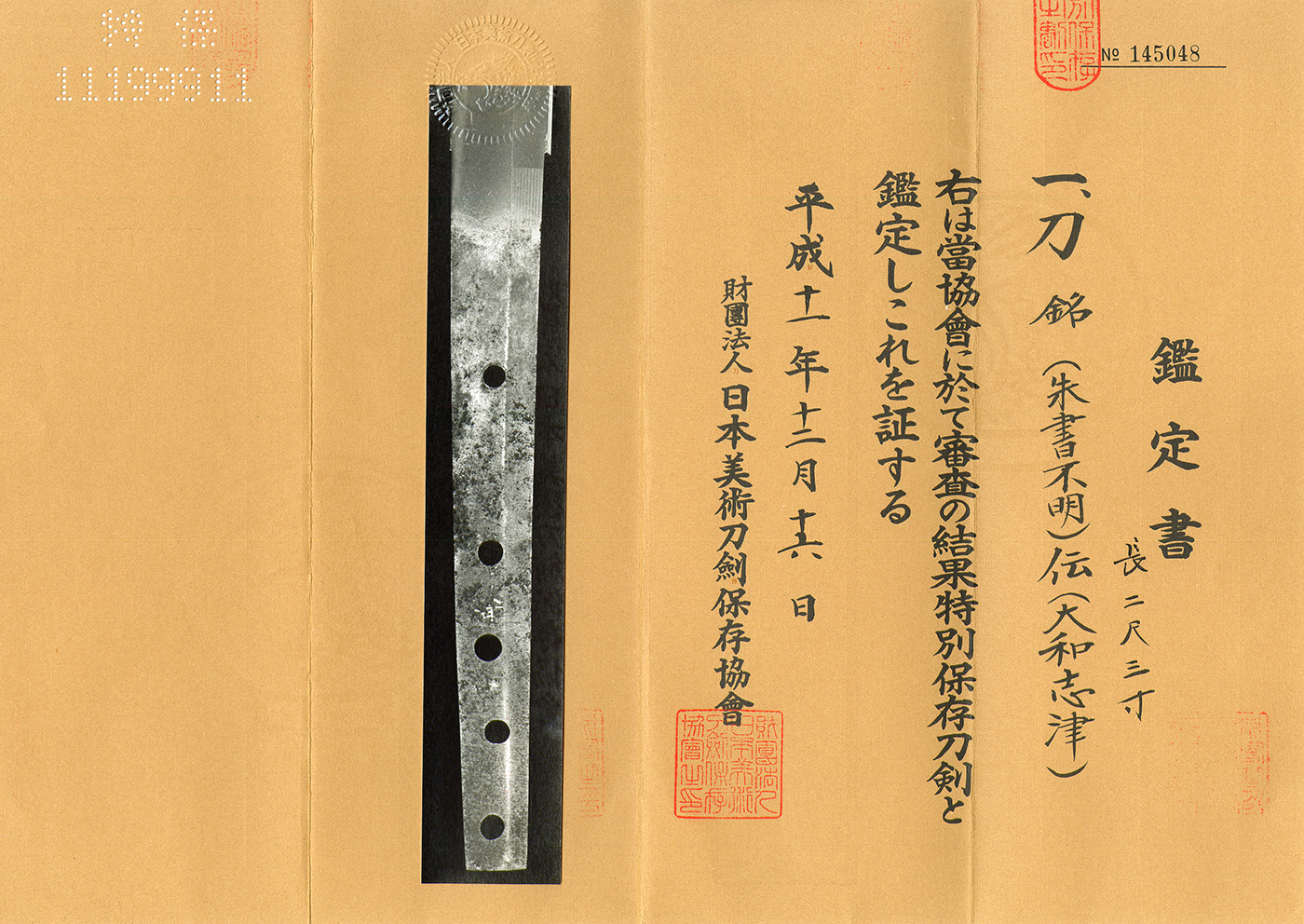Ordering Number: AS24008
Katana in Shirasaya with Koshirae (NBTHK Tokubetsu Hozon Token)
Signature: Mumei (transmitted as Yamato Shizu 伝 大和志津)
We divide 4 sections for each sword as Saijyo Saku, Jyojyo Saku, Jyo Saku and Regular Saku.
This piece is ranked as Jyojyo Saku.
Habaki: Silver single-foil
Blade Length: 69.7 cm (27.44 in)
Curvature: 1.0 cm (0.39 in)
Mekugi Hole: 5 holes
Width at Base: 2.68 cm (1.06 in)
Width at the Tip: 1.98 cm (0.78 in)
Thickness of rim (Kasane): 0.68 cm (0.27 in)
Sword Weight: 700 grams
Era: From the late Kamakura to the early Nanbokucho period
Shape: Mumei blade with large suriage
Jigane: Itame hada mixed with mokume hada with chikei.
Hamon: niedeki gunome midare with sunagashi and kinsuji, featuring a deep nioiguchi and double hamon with kinsuji.
Both have elements of Soshuden and are similar.
Koshirae:
Saya (Scabbard): Black lacquered
Tsuba: Round shaped iron tsuba with carving of pine trees and Chinese character.
Fuchikashira: Shakudo nanako plate with paulownia family crest.
Menuki: copper carving of Shishi-dog.
Features: Shizu Saburo Kaneuji, the founder of Yamato Shizu and Naoe Shizu, moved from Yamato Province (present Nara Prefecture) to Mino Province (present Gifu Prefecture), and among Kaneuji’s successors, those in Yamato Province are called Yamato Shizu and those in Mino Province are called Naoe Shizu.
Aoi Art’s Comment: Works from the Shizu group typically exhibit characteristics of the Soshu-den with hamon often slightly lower and the hamon shows changes.
NBTHK Tokubetsu Hozon Paper
AoiArt estimation paper
Whole Oshigata
Auction Starting Price:1,500,000 JPY-.






